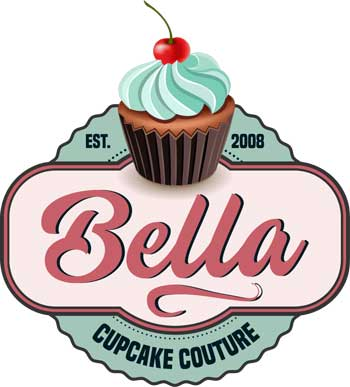
We sometimes forget how indispensable a mixing bowl is in our kitchen. Sometimes we ask ourselves: what is the use of mixing bowl? From our daily basic cooking tasks to the most sophisticated recipes, nothing can beat the good old’ mixing bowl. We use them when melting butter and when mixing vinaigrette or even pancake batter. There is nothing that a good mixing bowl cannot withstand.
I bet we can all agree that a good mixing bowl has to be durable, steady, and comfortable to use. This is why the question on what is the use of mixing bowl pops in our head. We know that it has many uses, but what exactly is a mixing bowl for? There are many unanswered questions, and in this article, I am going to discuss some uses of mixing bowls. Mixing bowls vary when it comes to what materials they are made of and their purpose.
Types of Mixing Bowls
Mixing bowls come in different materials, but the main ones you should remember are the following:
- Copper
- Glass
- Ceramic
- Plastic
- Stainless Steel
Indeed, you can find at least one of these in your kitchen. You can use them one way or another, but there are different ingredients that you should only mix in specific bowls. Here are other different types of mixing bowls and other purposes they serve.
Reactive Mixing Bowls
The first thing that you should consider when using a new mixing bowl is to check whether it is reactive or non-reactive. We know that cooking is science. To get chemical reactions, you have to mix the right ingredients. Also, you need to combine some elements in crafting a masterpiece.
When you use a reactive mixing bowl, the ingredients will react chemically. The food might end up with a metallic taste, foul flavor, change color, or even permanently stain your mixing bowl. This kind of bowl is reactive when it comes to food that is acidic such as tomatoes, citrus, tomato-based sauce, and vinegar.
Stainless steel will somehow resist reaction with acidic food, but that is not 100% sure.
Marinating Bowls
Marinades have at least an ingredient that could react with a reactive bowl. Thus, using ceramic or glass bowls when marinating is recommended. It is also ideal to use a container with a lid since plastic wraps cannot stick, and aluminum foil can be reactive.
Bowls for Whipping Egg Whites
You need to buy a small copper bowl solely for this purpose. Copper ions can help the egg whites peak and stiffen. Also, most chefs use copper regularly for this. If you don’t have a copper bowl, you may also opt for stainless steel or ceramic. It is not advisable to use glass in doing so since the sides of it are too slippery for achieving the correct density.
Bowls for Acidic Food
Acidic food usually comprises of tomato, citrus, and vinegar-based sauces. Never use a reactive bowl for these. They will, unfortunately, take on the taste of the bowl and may also stain the same permanently. Use only ceramic or stainless steel or glass.
We all have that bowl at home that is still ridden with the memories of your last holiday spaghetti. Do not use aluminum foil as well since this is also reactive.
Whipping Bowl
When asked with the question: what is the use of mixing bowl? People usually associate it with whipping ingredients. This is true since, as the name suggests, mixing bowls are used to mix ingredients in place.
Use a non-metal bowl in whipping butter, cream, and potatoes. Microscopic shavings such as in wooden bowls may contaminate the food. The smallest amount of which can contribute to metallic taste.
Bowls for Fruits
Fruits, being absorbent, can take on and get the flavors of the previous food left in the material of the bowl. Fruits are best contained in glassware or ceramic.
Bowls for Vinegar
Vinegar is acidic. Any salad or food with vinegar-based dressing should be stored in glassware or ceramic. You can use a plastic bowl if you are planning to mix for only five minutes. In combining your dressings through shaking, use airtight plastic containers. Otherwise, store them in a glass container.
Oil
When dealing with any oil, use a non-stain and non-reactive bowl. You should use only glass, ceramic, or stainless steel.
Dough and Batter
Anything with flour may be mixed in any bowl as long as it does not have acidic ingredients. Use a high-sided bowl so no flour bomb will occur. Flour bombs happen when the electric mixer tosses the flour all over your counter.
Mixing Bowl FAQs
Since the question “What is the use of mixing bowl?” has already been answered, let us look into some other possible questions that you might ask yourself one of these days.
What Should I Use in Cleaning Mixing Bowls?
That depends on the mixing bowl you are using and whether you prefer using the dishwasher or your hands. Glass and metal are suitable for dishwashers. On the other hand, ceramics are preferably hand washed.
Which is Better, Stainless Steel, or Glass Bowls?
Again, that depends on what you are mixing. Vinegar-based sauces are best mixed in a glass mixing bowl, while others are good for metal bowls.
What is the Best All-Around Mixing Bowl?
Glass mixing bowls are usually the go-to mixing bowls when in doubt. However, it is better to follow the guidelines depending on the ingredients you are trying to mix.
Conclusion
What is the use of mixing bowl? Mixing bowls have many uses best suited for the ingredients you are mixing. These are indispensable tools in the kitchen that you can’t do away with. Since you already know when and how to use mixing bowls, you are now ready to face another day in the kitchen. Get more tips on using mixing bowls.
